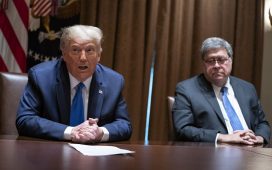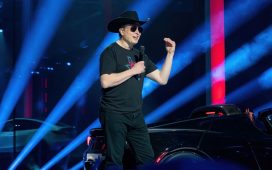More information about the amount of aid going to each project will be available in the public version of the Commission’s decision once it has agreed with member states and third parties on any confidential business secrets that need to be removed.
Aid for the projects, which are expected to be completed by 2028, will be disbursed by countries including Finland, Spain, France and Poland, and was coordinated by Germany. It follows a 3.2 billion-euro package to support a total of 9 billion euros of public and private spending that was coordinated by France and approved in December 2019.
European battery investment
Battery investment has poured in as Europe’s stricter pollution standards forces automakers to embrace electric cars and limit carbon-dioxide emissions.
BloombergNEF is forecasting 1.9 million sales of plug-in hybrid and battery-electric vehicles in Europe this year, topping China and almost quadrupling the total expected in North America.
As part of the Green Deal, the EU wants to toughen its 2030 emissions-reduction target to at least 55 percent from 1990 levels, compared with the existing goal of a 40 percent cut. The overhaul is a key pillar of the region’s strategy to recover from the coronavirus-induced recession.
European policy makers are aware the bloc’s key industries risk falling behind if they do not fill manufacturing gaps in energy-storage technology. Lithium ion batteries will power plug-in hybrid cars and also help balance electric grids transmitting renewable energy including wind and solar.
The battery initiative announced Tuesday got priority status as an Important Project of Common European Interest, or IPCEI. It will involve research and development of new technologies to reduce or completely eliminate cobalt or natural graphite and replace it with synthetics.
The projects will cover the entire battery value chain, from extraction of raw materials, design and manufacturing of battery cells and packs, and recycling and disposal. The aid is expected to contribute to development of technological breakthroughs, including different cell chemistries, novel production processes and other innovations.
Tesla’s ambitions
Tesla CEO Elon Musk has said the electric-car maker plans to add a battery-cell production facility at the assembly plant it’s building near Berlin. The site will initially have capacity of more than 100 gigawatt-hours a year and eventually ramp up to as much as 250 gigawatt-hours, Musk said during a battery conference in November.
“I’m pretty confident at that point it would be the largest battery-cell plant in the world,” Musk said. He did not give time frames for when he expects the facility to reach those capacity levels.
The factory Tesla is building in the small town of Gruenheide will be the company’s first in Europe. It’s slated to start making vehicle in the middle of this year and eventually assemble as many as 500,000 cars annually. While construction is far along, the company is still awaiting final approval for the project from local authorities. It also has been delayed by environmental groups’ legal challenges.
Other automakers investing in European battery production include Stellantis’s PSA. It set up a joint venture called Automotive Cells Company with French oil giant Total’s Saft unit in September.
Sweden’s Northvolt will operate a plant with Volkswagen Group in Germany, with BMW also participating in the project and ordering billions’ worth of batteries from the startup.
Asian battery giants including South Korea’s LG Chem, Japan’s Panasonic and China’s Contemporary Amperex Technology Co. Ltd. also have said they are going to set up or expand operations in the region.







